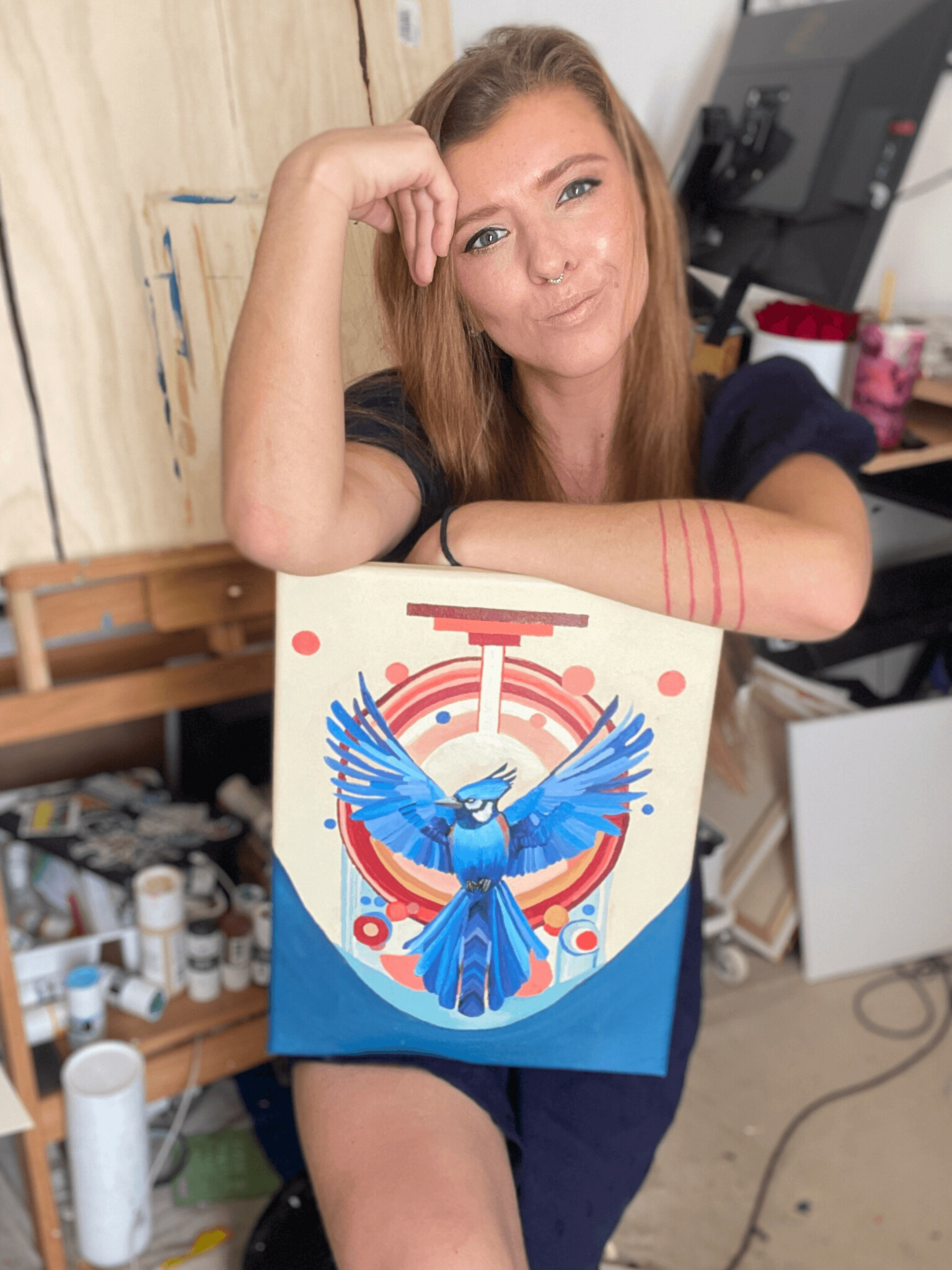Alright – so today we’ve got the honor of introducing you to Darcy Borg. We think you’ll enjoy our conversation, we’ve shared it below.
Darcy, looking forward to hearing all of your stories today. How do you think about spending on the little things / small joys when finances are tight?
When I was first starting out as an artist and during the leaner times, I often found myself evaluating every expense carefully, weighing it against my larger goals and dreams. Even now, things are still lean, and I firmly believe in cutting costs where I can to invest in my future. But I’ve learned that self-care isn’t just a luxury—it’s a necessity. It’s about keeping your soul happy and your spirit strong.
For me, that means consciously choosing where I spend. I don’t go out often or splurge on things like movie nights or coffee shop runs, but I’ve discovered so much joy in simple pleasures that don’t break the bank. Slow mornings with homemade coffee are a ritual that feels both grounding and indulgent. Hiking, exploring new towns, or even trying my hand at a new recipe brings a sense of adventure and accomplishment that keeps me motivated. Resting without guilt has been a game-changer—learning to recharge without feeling like I should be doing more.
These small, intentional moments remind me why I do what I do. They don’t just save money; they fuel my creativity, keep me balanced, and bring me happiness in the present while I work toward my long-term goals. It’s all about finding that balance—cutting costs where it doesn’t hurt and spending time and energy on things that truly nourish your soul.
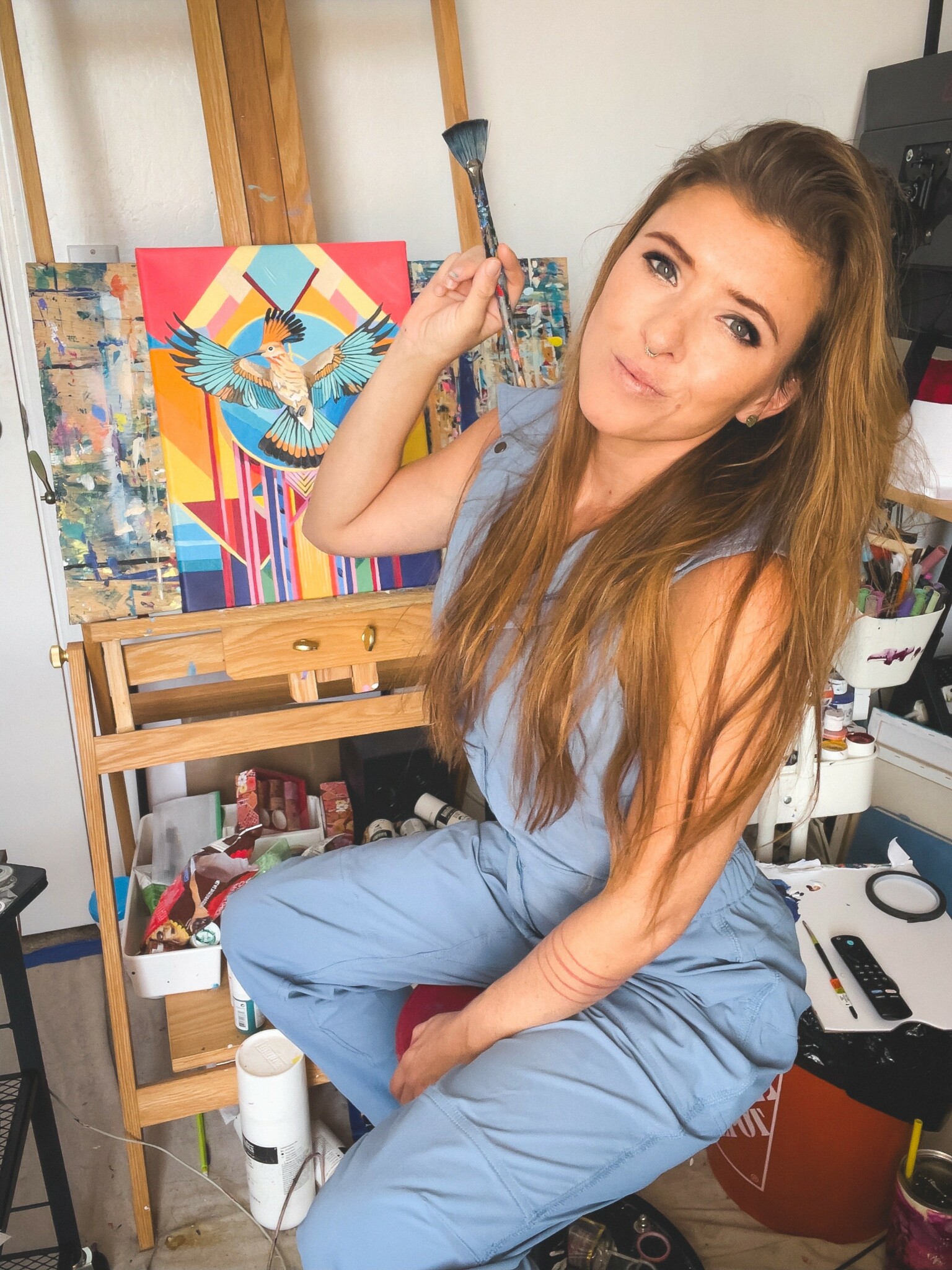
Great, appreciate you sharing that with us. Before we ask you to share more of your insights, can you take a moment to introduce yourself and how you got to where you are today to our readers.
I was born into a world of diplomacy, with both of my parents, Anna and Parker Borg, working for the State Department in Washington, D.C. When I was four, my sisters and I moved to Iceland, where my father became the U.S. ambassador, and my mother stepped into the role of homemaker for the first time. My school in Iceland was an unconventional setup—a small group of just 15 children of varying ages learning together in a cozy apartment. It was in that relaxed and creative environment that I decided I wanted to be an artist, even convincing myself that learning to read wasn’t necessary. Somehow, I managed to get away with it.
After Iceland, our family relocated to Malaysia, immersing ourselves in a completely different culture. We learned how to use machetes in the rainforest and embraced the adventure of life there. But when my sister became seriously ill with chronic fatigue, we had to return to Virginia for her medical care. Transitioning back to the U.S. was jarring. The kids at my new school had grown up together, forming tight-knit bonds that made me feel like an outsider. It was a far cry from the America I had imagined, shaped by Hollywood movies.
Throughout these moves, my love for art was a constant. My Aunt Merrily, a professional artist, played a pivotal role in nurturing my creativity. Every summer and winter, I would visit her in Minnesota, where we spent hours making art together. She always had something new to teach me, and her encouragement was a gift that shaped my artistic journey.
In high school, my mother made history as the first female Deputy Chief of Mission in Rome, Italy, where I attended an international school. I pursued art seriously through the International Baccalaureate program, even as I navigated the typical teenage struggles of falling in with the wrong crowd. Despite the distractions, I maintained good grades and found solace and joy in art, my passion deepening with each passing year.
After high school, I enrolled at the Maryland Institute College of Art (MICA), but my plans were derailed when I was diagnosed with Bell’s palsy, later linked to Lyme disease. The illness forced me to withdraw from school. At just 18, I found myself bedridden, my brain swollen from the disease. Basic tasks like showering, making phone calls, or even reading became impossible. Struggling with despair, I turned to alcohol to numb the pain. My parents, seeing my decline, brought me to France, where my mother was working, hoping a change of scenery would help. But the move only worsened my struggles. I was drinking heavily, battling severe bulimia and anorexia, and in a toxic relationship. Intervention was inevitable, and I was sent to a clinic in Baltimore, where I spent over six months rebuilding my health and learning to take care of myself again with the help of my family.
After another six months of recovery, I moved to Los Angeles in 2010. Just down the street from my house was the Art Institutes of Los Angeles, where I enrolled to study film production. Over the next few years, I discovered a passion for editing, winning several awards along the way. Recognizing my love for editing, I skipped two years of school and applied to the American Film Institute (AFI), the top film school in the U.S. To my surprise, I was accepted, and after graduating, I had the privilege of working alongside Oscar and Emmy winners.
While my career flourished, I found myself losing balance. Seeking clarity and peace, I trained to become a yoga teacher and eventually moved to the mountains of Telluride. In 2017, I settled in Arizona, where I worked as a video editor for AZ Family, earning an Emmy. However, by 2021, I began experiencing memory loss and dissociative episodes, forcing me to step away from work. It was a dark period, but with the support of my husband and months of therapy, I found my way back to art.
What started as a reluctant attempt to paint quickly turned into an obsession—a lifeline that kept me grounded. Initially painting at the kitchen table, I soon moved into a dedicated studio space my husband helped create. I started sharing my work on Instagram, and to my surprise, it resonated with others. The response gave me the courage to apply to a gallery, where I was accepted.
After years of challenges and detours, I’ve come full circle. My childhood dream of being an artist is finally my reality, and I couldn’t be more grateful for the journey that brought me here.
Now I create a blend of geometric universes with animals, combining the structured beauty of symmetry with the organic grace of wildlife. My paintings reflect not just the places I’ve lived but the lessons and emotions those experiences have imparted—resilience, curiosity, and a deep appreciation for the interconnectedness of life.
Each piece is an invitation to explore a world where nature and geometry coexist harmoniously. The animals in my work are more than subjects; they are symbols of strength, adaptability, and the balance we seek in our lives. The geometric patterns offer structure, grounding the vibrancy of the natural forms they frame. Together, they create a visual language that resonates with the duality we all navigate—chaos and order, freedom and boundaries, instinct and intention.
Through my art, I aim to evoke both wonder and introspection. Whether it’s a macaw soaring through a kaleidoscope of shapes or a quiet blue longhorn standing amidst vibrant geometry, my work tells stories of connection, growth, and beauty in unexpected places. Painting is not just my passion—it’s my way of making sense of the world and sharing that sense of wonder with others.
Now, as I look back on my journey, I see how every twist and turn has shaped this creative path. From my unconventional schooling in Iceland to machetes in the Malaysian rainforest, from battling illness to rediscovering myself through art, every moment has contributed to the worlds I now bring to life on canvas. It’s a privilege to create, to share, and to know that something I paint might inspire someone else to see the world in a new light.
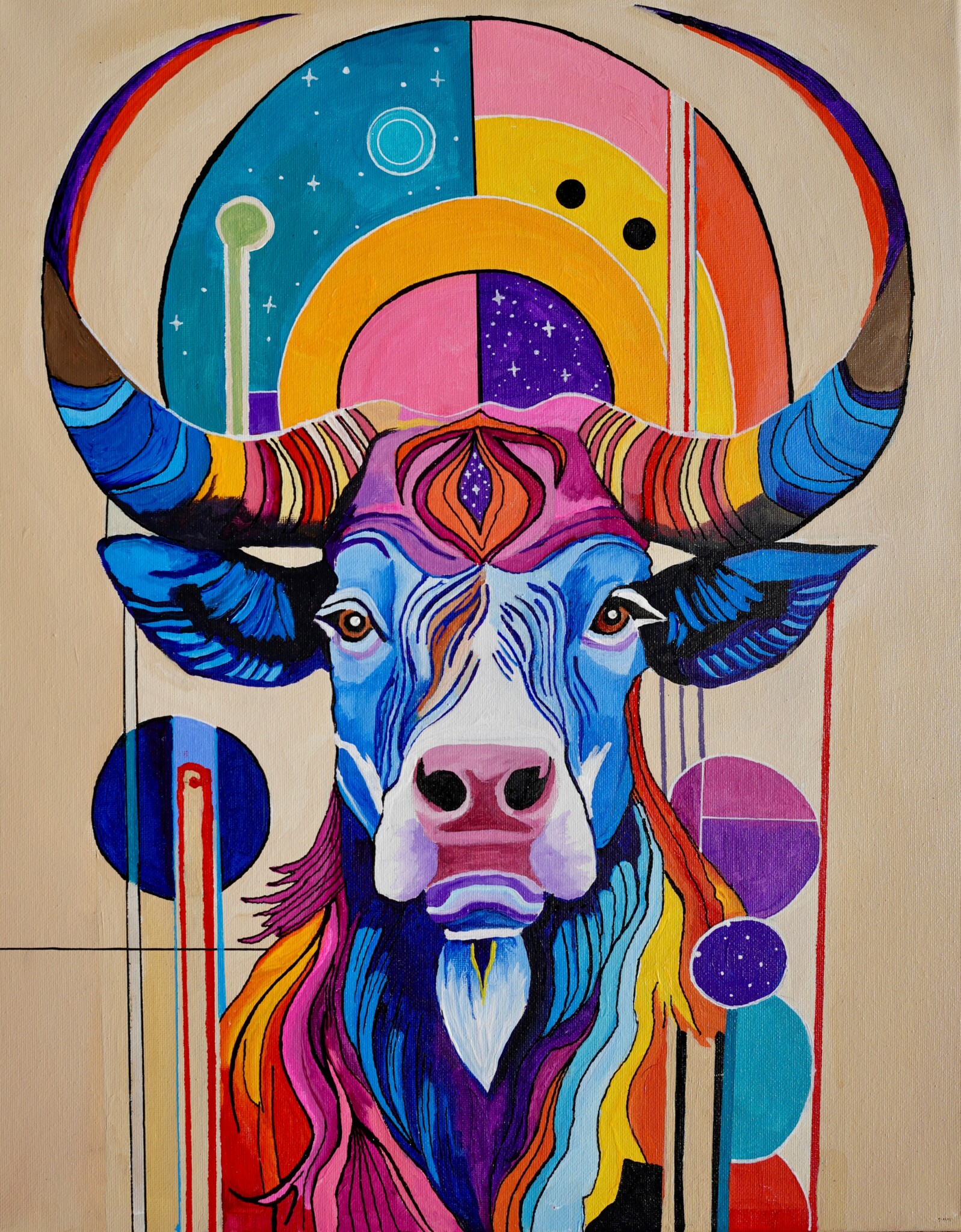
Alright – so here’s a fun one. What do you think about NFTs?
I think NFTs are a scam. While the technology behind them—blockchain—has interesting potential, the way NFTs are marketed and sold often feels exploitative. They’re frequently presented as an easy way for creators to make money, but in reality, many artists see little to no financial benefit. Instead, middlemen and speculators tend to profit the most.
On top of that, the environmental impact of many blockchain networks is significant, raising serious concerns about sustainability. And let’s not forget the number of scams and copyright violations in the NFT space, with people minting and selling artwork they don’t even own.
For me, creating art is about genuine connection and meaningful expression. NFTs feel like the opposite—a commodification of creativity that prioritizes hype over substance. While I understand why some artists explore the space, it’s not something I feel aligns with my values or my vision for art.
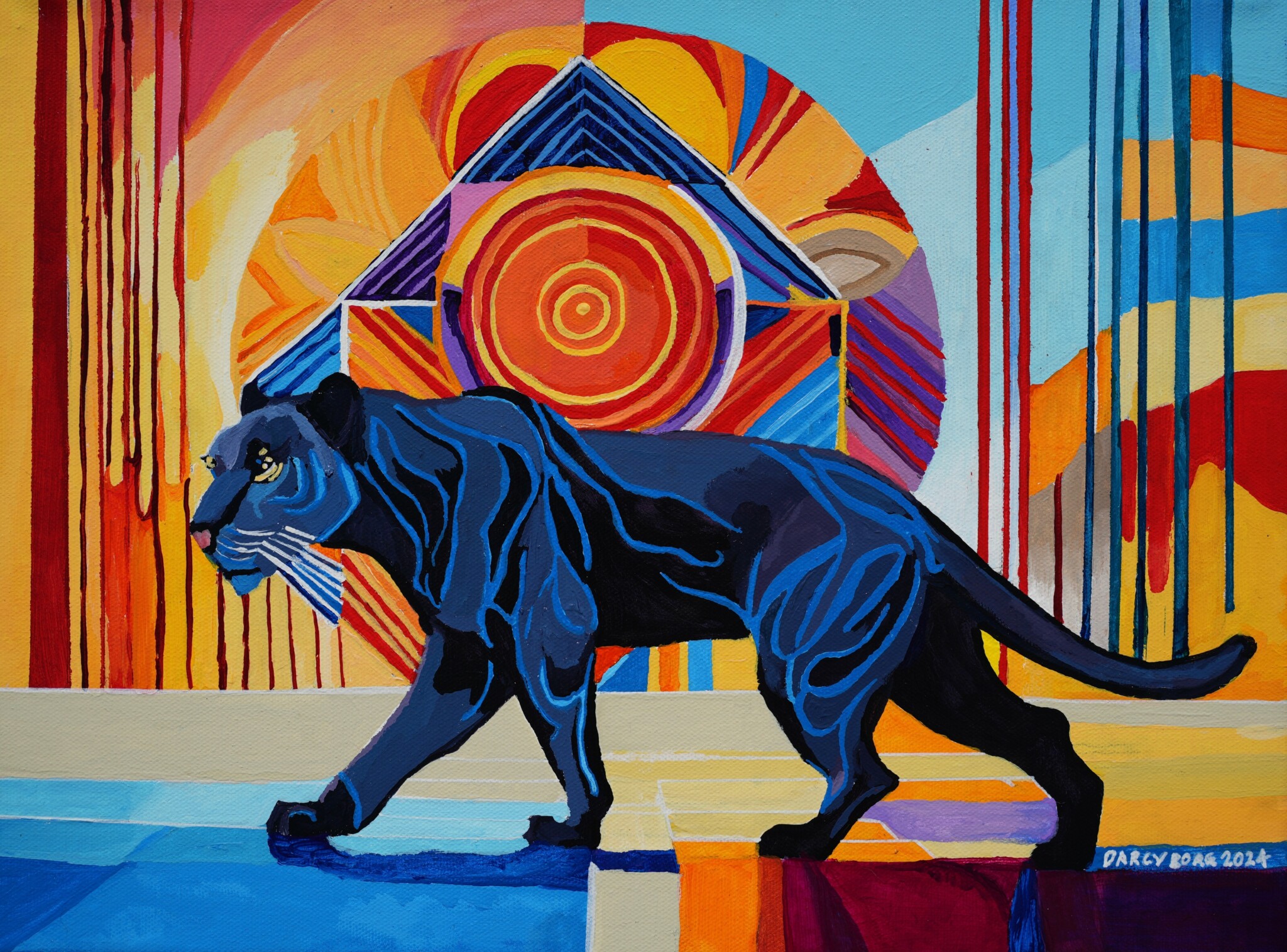
What’s the most rewarding aspect of being a creative in your experience?
The most rewarding aspect of being an artist is the connection it fosters—with people, with ideas, and with myself. There’s something magical about creating something from nothing, watching a blank canvas transform into a piece that resonates with others. Working with my hands, feeling the brush glide across the surface, and seeing vibrant colors come to life is deeply satisfying.
It’s also about making something beautiful and meaningful, something that captures emotions and stories that words alone can’t convey. Art allows me to express myself authentically, to pour my heart into my work and share it with the world. Knowing that my creations can bring joy, inspire reflection, or even spark a moment of connection is an incredible gift. For me, that’s the true reward—being able to share my passion and touch the lives of others through my art.
Contact Info:
- Website: https://www.darcyborgart.com/
- Instagram: @darcy.does.art
- Facebook: https://www.facebook.com/darcy.darse?
- Linkedin: https://www.linkedin.com/in/darcyborg
- Youtube: https://youtube.com/@darcydoesart?si=Oev0ElJTiQ41glKN
- Other: Cara: https://cara.app/darcydoesart/all
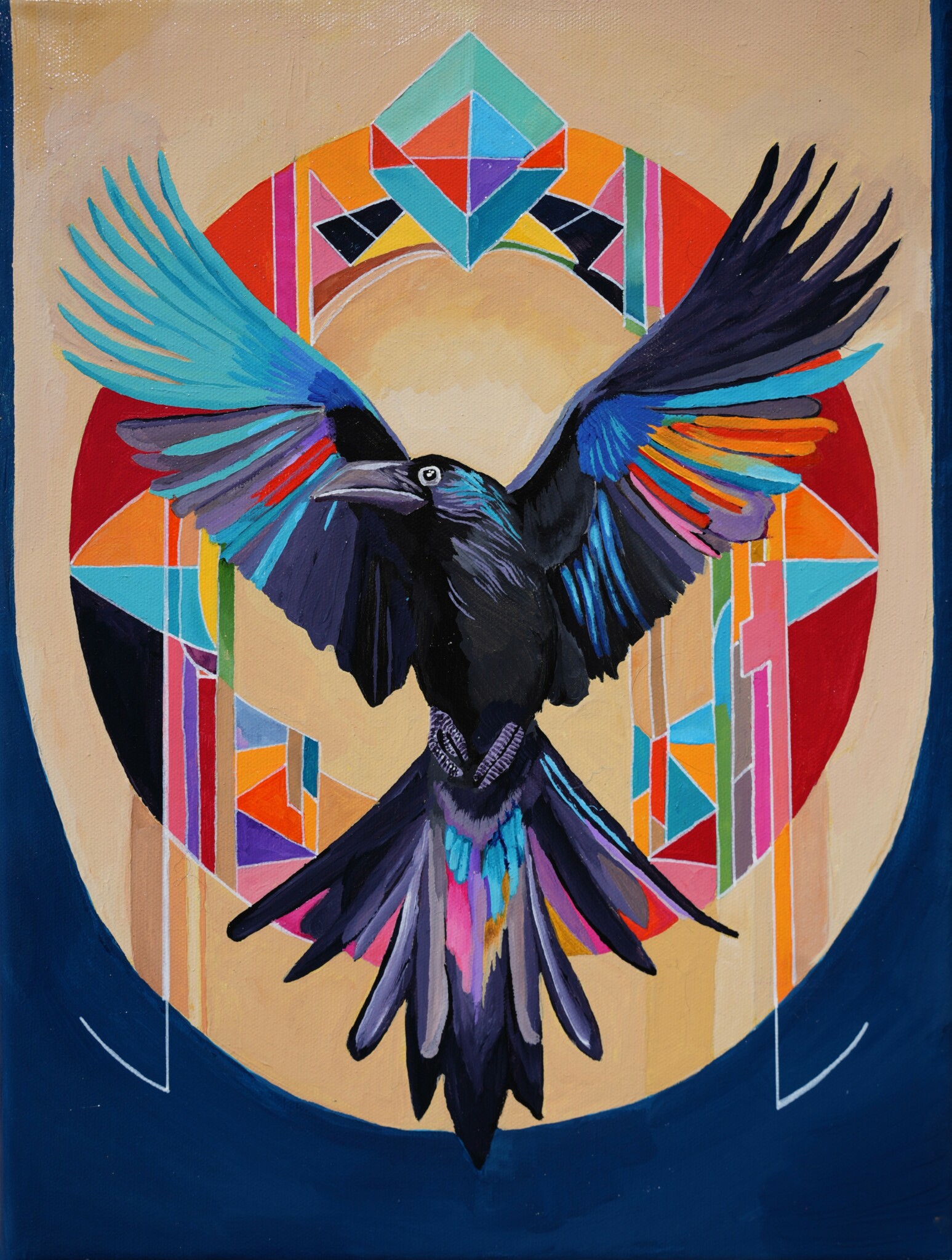


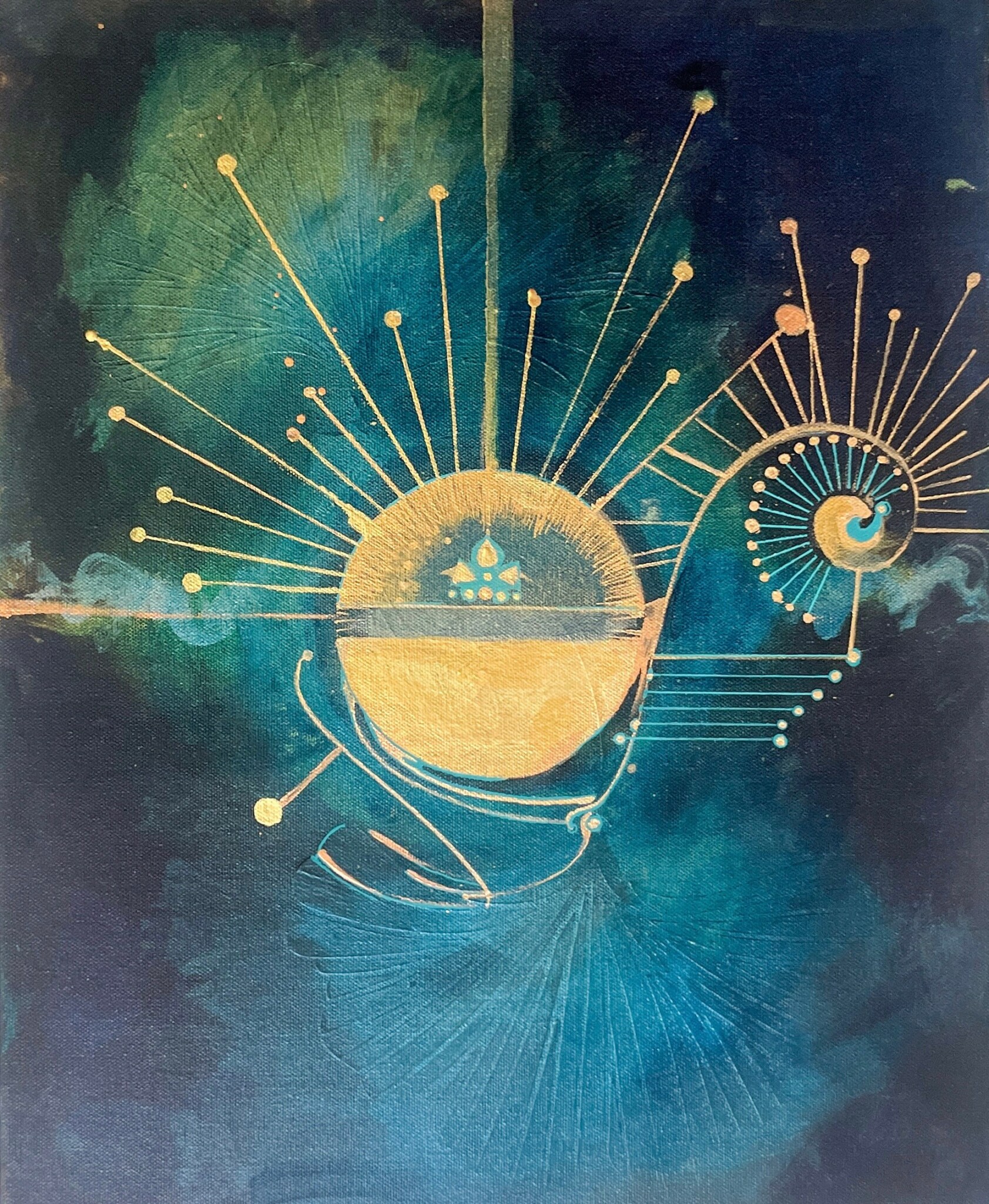
Image Credits
Darcy Borg


